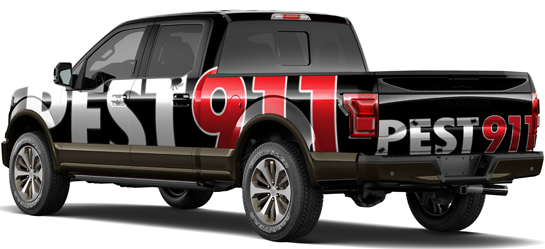How to Prevent & Treat for Drywood Termites in The Villages, FL; Termite Colony Size & More
Most people are familiar with the basics of termites. They are found throughout the world, and in the United States, there are 45 types of termite species that fall into one of three categories; subterranean, dampwood, and drywood termites. Throughout Florida, drywood termites are fairly common. With this in mind, we at Pest 911 would like to elaborate on drywood termites.
Drywood Soldier Termites
Drywood soldier termites have a distinctive forehead that slopes down gradually from the top of the head. It appears flattened to slightly rounded from the side view. Their antennae have an enlarged and clublike third segment. The top body plate, known as the pronotum, that is wide or wider than the head when viewed from on top. Their head is orange to reddish-brown and have
Drywood Termite Swarmers
Drywood swarmers have an orange brown head and pronotum and the abdomen is dark brown. Their wings are a smoky colored wings and blackish membrane and pigmented veins.
Drywood Nymph Termites
Drywood termites prefer dry woods, with a moisture content under 12% and eat the wood they tunnel through. Unlike most other termites, drywood termites do not require soil. These termites are more or less homebodies and reside in the wood they are consuming. These termites do not have a worker class, leaving the nymphs to do most the labor.
Drywood Termite Colony Size
Drywood termites will swarm to look for perspective homes and will find the cracks or knotholes in wood to penetrate. The swarmers will gnaw a small tunnel and then close it off, excavate the chamber and mate. Every year they continue to grow their numbers where by the end of the first year they may have 20 nymphs and 1 soldier, by the fourth year they can anywhere from 70-700 members. For drywood termites, swarming usually occurs in September through November and prefer the sunny weather of around 80 degrees. In cooler climates, they may swarm in July.
Drywood Termite Damage
Drywood termites can cause extensive damage to the interior structures of homes and businesses. They can easily infest furniture, pictures frames, and lumber and have expanded their infestation areas from being shipped from manufacturers producing these products. These termites will dive into a stack of firewood and are most likely to infest exposed areas such as window frames, doors, attics, molding, and so on. Experts believe them to be either forgetful or creatures of habit as the swarmers will re-infest the same places.
Termite Inspection & Treatment
When it comes to drywood termites, like any termite type, you need a professional that is certified and licensed to inspect, identify, and eliminate termites. Typically, a written documentation is done by the inspector where they list their findings and provide solutions accordingly. There is a variety of effective methods to eliminate termites including fumigation, heat treatments, and other local treatments. It most cases, the wood they were infesting would need to be replaced as they compromised the integrity of the wood. If you suspect termites, it is in your better interest you call in a professional immediately to avoid excessive damage. Call Pest 911 today and let our qualified experts take care of your termite issue.


